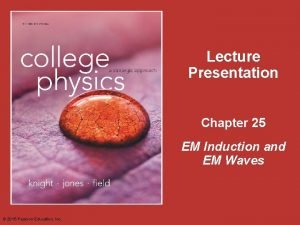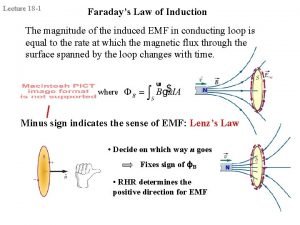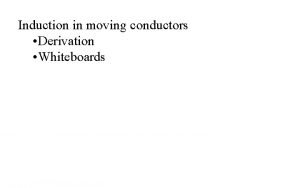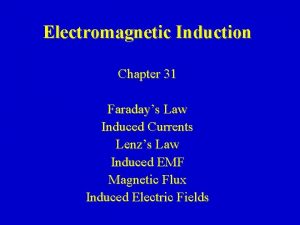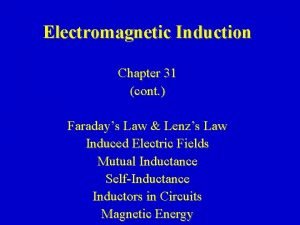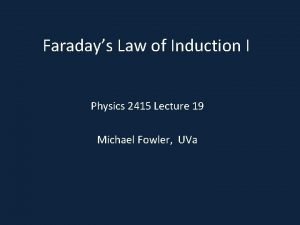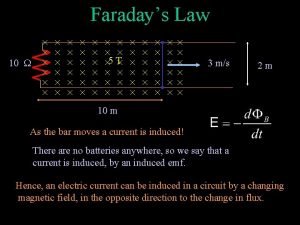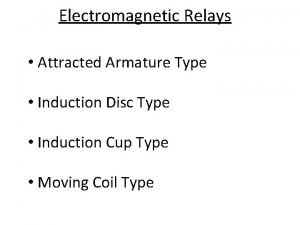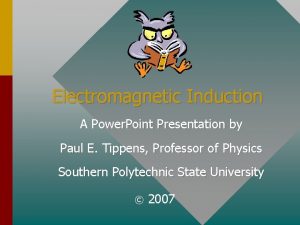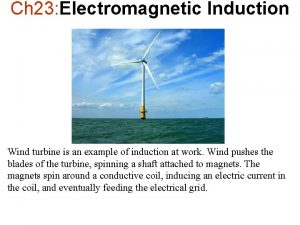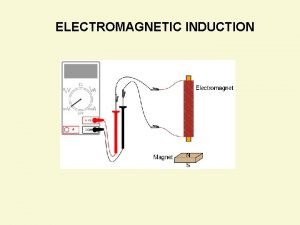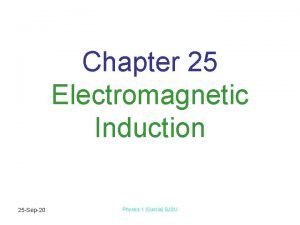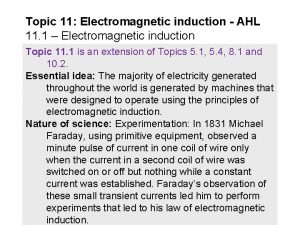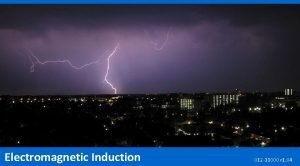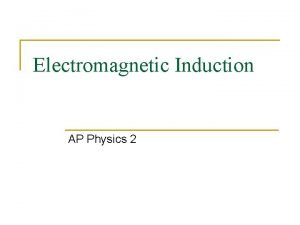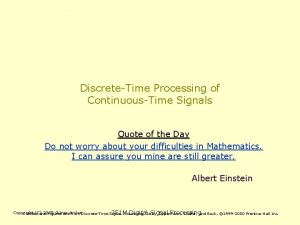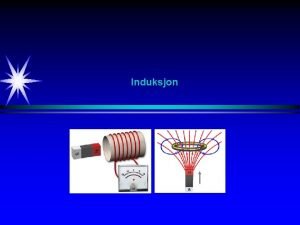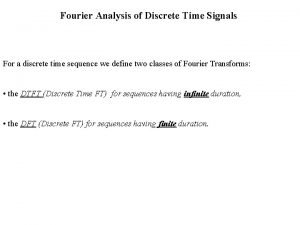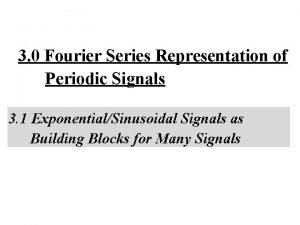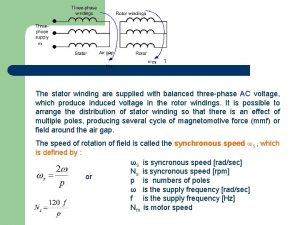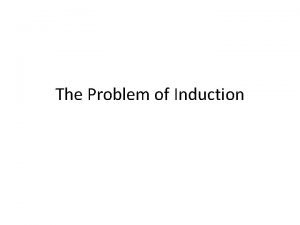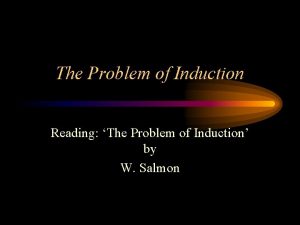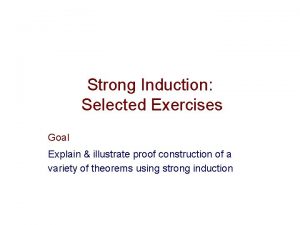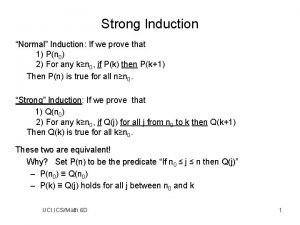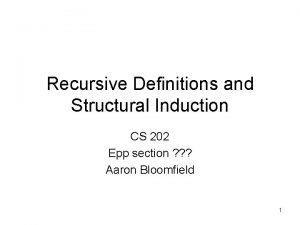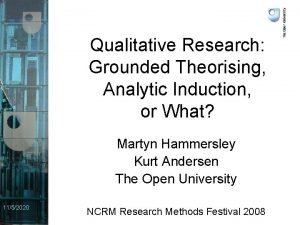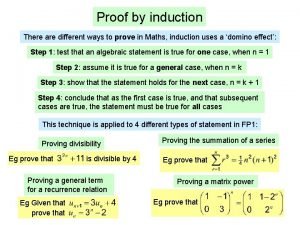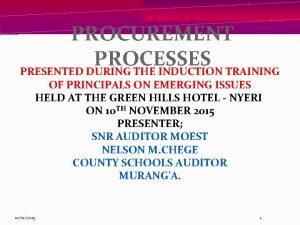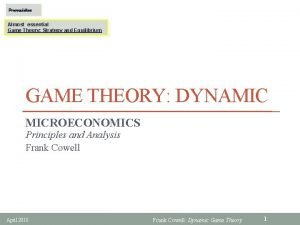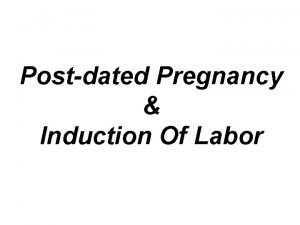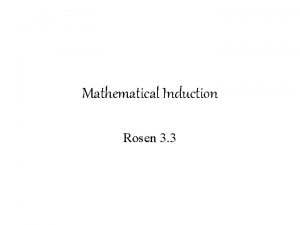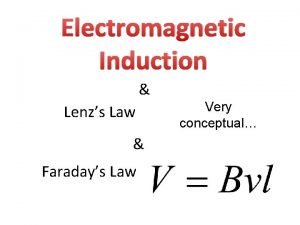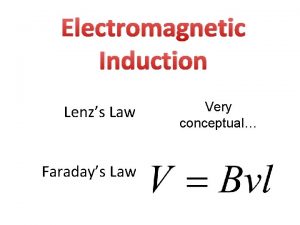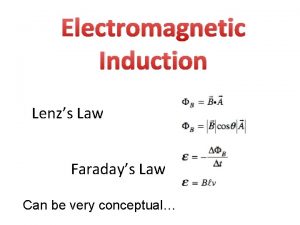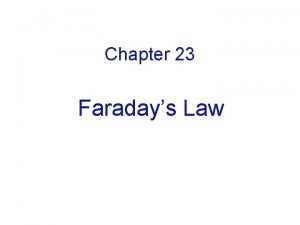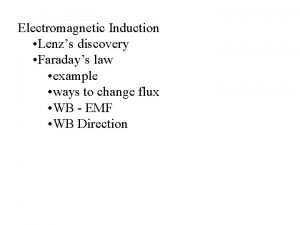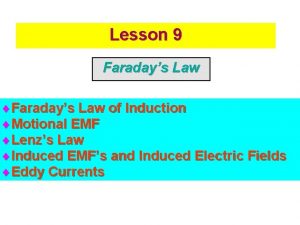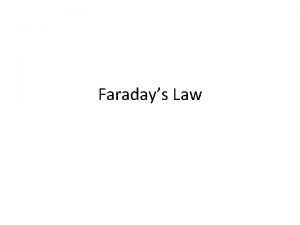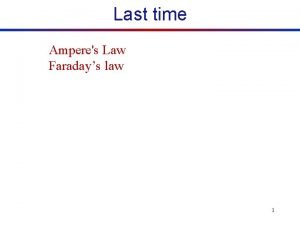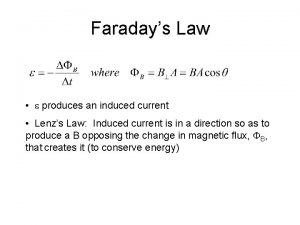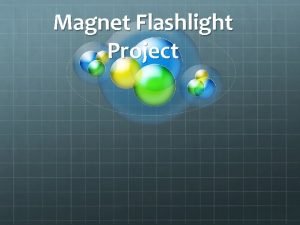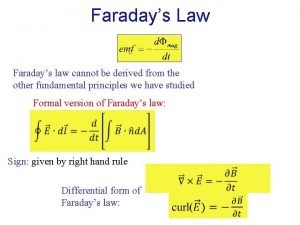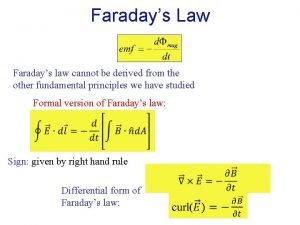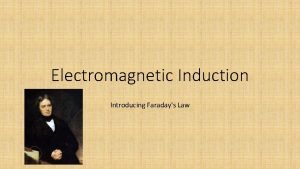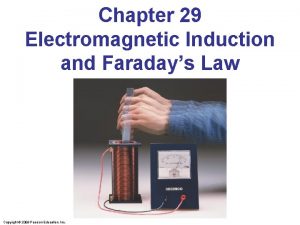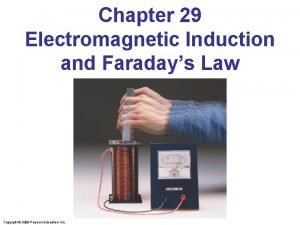Signals ELECTROMAGNETIC INDUCTION Faradays Law Lenzs Law Time


























































- Slides: 58

Signals

ELECTROMAGNETIC INDUCTION

Faraday’s Law& Lenz’s Law


Time Domain REPRESENTATION OF SIGNALS

Signal, amplitude and phase

Amplitude of signal as a function of phase

Hellschreiber painted text Each character is sent on a double line, improving the ability to read the characters under a noisy channel, communicated as a series of dots. A black (white ) dot is coded as 900 (980) Hertz tone. The tones modulate in amplitude a RF carrier. Is signaling analog or digital? Is the data analog or digital?

FREQUENCY DOMAIN REPRESENTATION OF SIGNALS

The square signal and its generation usingenerated signals.

Frequency domain representation of the square signal

A square pulse of length x second, from time -x/2 to time x/2

Spectrum of a square pulse of length x second, from time -x/2 to time x/2

ANTENNAS

What is an antenna? • A converter: – Transmitter: radio-frequency (RF) electrical energy to electromagnetic energy – Receiver: electromagnetic energy and to electrical energy • Two-way communications: – two antennas or – single transmission/reception antenna

Wavelength • In free space, distance traveled during one period • Velocity: speed of light (c)

Antenna Gain – Output power, in a particular direction, relative to that produced by an isotropic antenna – A ratio of power. S – In d. Bi:

Directivity and Gain Flashlight Analogy

Radiation Pattern

Types of Antennas • Isotropic • Idealized, point in space • Radiates power equally in all directions • Dipole • Half-wave dipole (Hertz antenna) • Omnidirectional • 2 D isotropic • Vertical, 1/4 –wave monopole, Marconi, groundplane • Directional • Yagi • Parabolic reflective

Antenna Patterns

Geometry of the Dipole

Radiation Pattern of the Dipole

Geometry of the Groundplane

Radiation pattern of the Groundplane

Geometry of the Yagi

Radiation pattern of the Yagi

Beamwidth

What is the beamwidth?


PROPAGATION

Propagation Modes • Ground-wave • Sky-wave • Line-of-sight

Ground Wave Propagation

Ground Wave Propagation • Follows contour of the earth • Diffraction: bending of waves around obstacles • Example: AM radio (day time) • Long distances are possible, but high power required

Sky Wave Propagation

Sky Wave Propagation • Signal reflected from ionized layer (ionized atoms) of upper atmosphere (160 to 500 km) back down to earth • Signal can travel a number of hops, back and forth between ionosphere and earth’s surface • Reflection effect caused by refraction – Refraction: medium of one density to a medium of another density causes bending of waves • Examples – Amateur radio, CB radio, short wave broadcast • Drawback – Not reliable, conditions vary considerably as a function of day time and time of the year

Line-of-Sight Propagation

Line-of-Sight (LOS) Propagation • Transmitting and receiving antennas must be within line of sight • Terrestrial communications • antennas within effective line of sight • Satellite communications – signal from • 30 MHz (downlink) • 150 MHz (uplink, not reflected by ionosphere)

LOS Propagation Distance • Optical line of sight • Effective, or radio, line of sight • d = distance between antenna and horizon (km) • h = antenna height (m) • K = adjustment factor to account for refraction, rule of thumb K = 4/3

LOS Propagation Distance • Maximum distance between two antennas for LOS propagation: • h 1 = height of antenna one • h 2 = height of antenna two

Channel Capacity • Nyquist • Shannon

Impairments • • Attenuation and attenuation distortion Free space loss Noise Atmospheric absorption Multipath Refraction Thermal noise

Attenuation • Signal strength drops with distance and frequency • Received signal strength must be: – at least equal to receiver sensitivity – (several times) higher than noise errorless reception

Free Space Loss = wavelength (in meters) d = separation distance (in meters) c = speed of light (3 × 108 m/s)

Free Space Loss (d. B)

Free space loss at 2. 4 GHz and 5 GHz as a function of distance

RSS as a function of distance


Range as a function of the data rate for Wi. Fi/802. 11 n

Percentage of total area as a function of the data rate

Percentage of airtime as a function of the data rate Under the fairness assumption.

Solar Activity • Solar storm headed to Earth but few power grid problems expected. - The Ottawa Citizen, July 13, 2012. • Massive blast of radiation from a huge solar flare headed for Earth. Solar radiation that NASA warns could temporarily disrupt satellite communications and power grids. - The Calgary Herald, July 14, 2012.

The big one.

Planetary A index during the month of July 2012.

Coronal Mass Ejection of July 12, 2102

WIRELESS DIGITAL COMMUNICATIONS MYTHS

1. Digital communications is superior to wireless analog communications! • Current consumption, analog is better. • Digital modulation is more complex and needs more resources (circuitry or computational).

2. Digital voice is better than analog voice!
 Faraday's law of electromagnetic induction ppt
Faraday's law of electromagnetic induction ppt Faraday law
Faraday law Faraday's law of electromagnetic induction ppt
Faraday's law of electromagnetic induction ppt Faraday's law is
Faraday's law is Faraday's law of electromagnetic induction
Faraday's law of electromagnetic induction Emf law
Emf law Faradays law
Faradays law Induction disc type relay diagram
Induction disc type relay diagram Electromagnetic induction ppt
Electromagnetic induction ppt An ignition coil operates using the principle of
An ignition coil operates using the principle of Electromagnetic induction wind turbine
Electromagnetic induction wind turbine An ignition coil operates using the principle of
An ignition coil operates using the principle of Conclusion of electromagnetic induction
Conclusion of electromagnetic induction Blv sin theta
Blv sin theta Electric generator electromagnetic induction
Electric generator electromagnetic induction Electromagnetic induction
Electromagnetic induction Electromagnetic induction
Electromagnetic induction Flux linkage unit
Flux linkage unit Define mutual inductance of 1 henry
Define mutual inductance of 1 henry Animals and human language chapter 2
Animals and human language chapter 2 Animals and human language شرح
Animals and human language شرح Communicative signals and informative signals
Communicative signals and informative signals Discrete time processing of continuous time signals
Discrete time processing of continuous time signals Faradays constant
Faradays constant Faradays lov
Faradays lov Unit step function examples
Unit step function examples Fourier analysis of discrete time signals
Fourier analysis of discrete time signals Fourier series representation
Fourier series representation For minutes. start.
For minutes. start. Newton's first law and second law and third law
Newton's first law and second law and third law Newton's first law and second law and third law
Newton's first law and second law and third law Boyle's law charles law avogadro's law
Boyle's law charles law avogadro's law Constant in avogadro's law
Constant in avogadro's law Electrostatics
Electrostatics Analytic induction
Analytic induction Electric preheating furnace
Electric preheating furnace Introduction of three phase induction motor
Introduction of three phase induction motor Air gap power in induction motor formula
Air gap power in induction motor formula Problem of induction example
Problem of induction example Problem of induction example
Problem of induction example Power flow diagram of induction motor
Power flow diagram of induction motor Strong induction exercises
Strong induction exercises Structural induction example
Structural induction example Speed control of squirrel cage induction motor
Speed control of squirrel cage induction motor Short wave diathermy definition
Short wave diathermy definition Self induction of coil formula
Self induction of coil formula Repulsion start induction run motor
Repulsion start induction run motor Fast effective rule induction
Fast effective rule induction Structural induction example
Structural induction example Analytic induction qualitative research
Analytic induction qualitative research What is the correctness of algorithm
What is the correctness of algorithm Proof by induction
Proof by induction Induction motors procurement
Induction motors procurement Backwards induction
Backwards induction Modified bishop score rcog
Modified bishop score rcog Deductive method
Deductive method Environmental induction training ppt
Environmental induction training ppt Comsol induction heating
Comsol induction heating Strong induction
Strong induction
